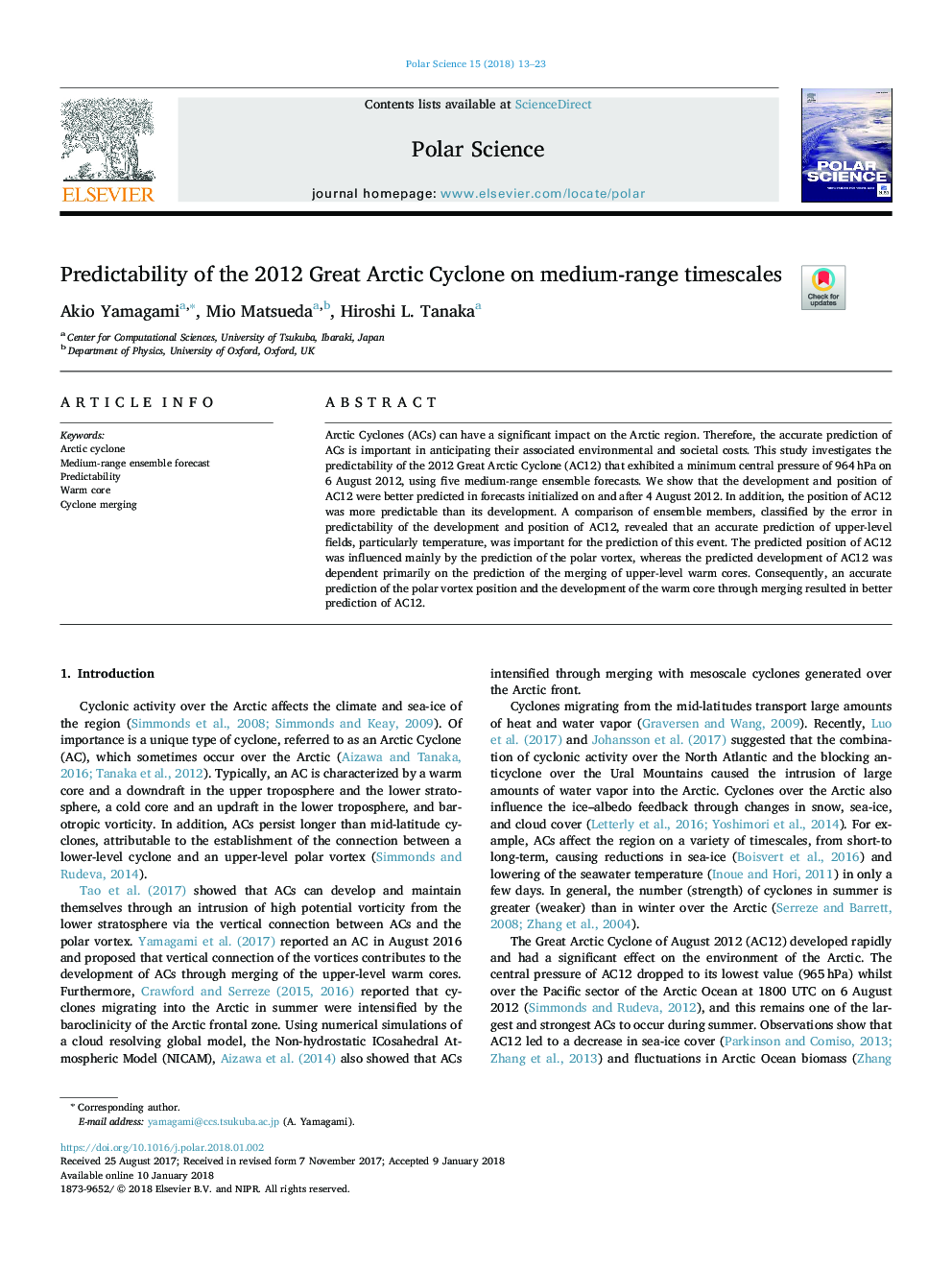| Article ID | Journal | Published Year | Pages | File Type |
|---|---|---|---|---|
| 8907814 | Polar Science | 2018 | 11 Pages |
Abstract
Arctic Cyclones (ACs) can have a significant impact on the Arctic region. Therefore, the accurate prediction of ACs is important in anticipating their associated environmental and societal costs. This study investigates the predictability of the 2012 Great Arctic Cyclone (AC12) that exhibited a minimum central pressure of 964â¯hPa on 6 August 2012, using five medium-range ensemble forecasts. We show that the development and position of AC12 were better predicted in forecasts initialized on and after 4 August 2012. In addition, the position of AC12 was more predictable than its development. A comparison of ensemble members, classified by the error in predictability of the development and position of AC12, revealed that an accurate prediction of upper-level fields, particularly temperature, was important for the prediction of this event. The predicted position of AC12 was influenced mainly by the prediction of the polar vortex, whereas the predicted development of AC12 was dependent primarily on the prediction of the merging of upper-level warm cores. Consequently, an accurate prediction of the polar vortex position and the development of the warm core through merging resulted in better prediction of AC12.
Keywords
Related Topics
Physical Sciences and Engineering
Earth and Planetary Sciences
Earth and Planetary Sciences (General)
Authors
Akio Yamagami, Mio Matsueda, Hiroshi L. Tanaka,
